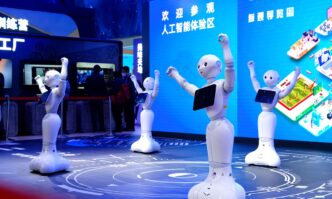2025 is shaping up to be a pivotal year for enterprise technology, and a new report from Cloudera confirms why. In its global survey of 1,484 IT leaders titled The Future of Enterprise AI Agents, the company spotlights a major shift toward agentic AI—systems that can think, plan, and act without human input. These autonomous agents are moving well beyond theory, marking a new phase in enterprise transformation.
Agentic AI is far more than a smarter chatbot. Unlike traditional automation tools that rely on scripted responses, these next-gen AI agents use advanced large language models (LLMs) and natural language processing (NLP) to understand complex tasks and execute them independently. For many enterprises, this isn’t just innovation—it’s strategic reinvention.
From Experimentation to Enterprise-Wide Strategy
The data is clear: adoption is picking up speed. Over half of organizations (57%) started using AI agents in the past two years, with 21% beginning just last year. Crucially, 83% of IT leaders now view these agents as vital to staying competitive, while nearly 60% believe delaying deployment could leave them behind in 2025.
It’s no longer about testing the waters. A staggering 96% of businesses surveyed plan to ramp up deployment over the next year, with 50% targeting organization-wide implementation.
Real-World Deployment Is Already Underway
Agentic AI is no longer confined to innovation labs. It’s already driving impact in IT, security, development, and customer support. The top three use cases reported include:
- Performance optimization agents (66%): These manage infrastructure resources like server loads and cloud environments in real time to boost efficiency.
- Security monitoring agents (63%): AI-driven systems detect suspicious activity and respond to threats autonomously.
- Development assistants (62%): These tools write and test code based on evolving requirements, enhancing software delivery speed and accuracy.
But the reach doesn’t stop there. Over 78% of enterprises are using AI agents to enhance customer service, while 71% rely on them for automating internal processes. More than half (57%) use them for predictive analytics—highlighting how these systems are already delivering ROI across core business functions.
Beyond GenAI: Agentic AI Takes the Lead
While generative AI (GenAI) tools are adept at creating text, images, and code, agentic AI brings structure and direction to those outputs. The survey shows a growing overlap between the two: 98% of enterprises are either integrating agentic AI into their GenAI efforts or planning to do so.
Even more telling, 81% of companies are actively using agents to boost the usefulness and reliability of GenAI models. This collaboration between creation and coordination is laying the groundwork for smarter enterprise ecosystems.
Open-Source Models Are Catching Up Fast
Open-source large language models like Llama, DeepSeek, and Mistral are gaining ground—and fast. Many enterprises now favor them for their flexibility, cost-efficiency, and ability to run in-house, sidestepping vendor lock-in and enhancing compliance.
Unlike proprietary models tied to specific platforms, open-source tools allow organizations to fine-tune and self-host, which is especially important for businesses concerned about data privacy, sovereignty, and cloud dependency.
Challenges Still Loom: Trust, Cost, and Complexity
Despite growing enthusiasm, hurdles remain. More than half (53%) of respondents flagged data privacy as their top concern, while 40% cited the difficulty of integrating AI agents into legacy systems. High implementation costs also remain a barrier for 39% of enterprises.
Integration complexity is a real issue. Over one-third (37%) of IT leaders described onboarding agentic AI into existing workflows as highly challenging. To overcome these roadblocks, companies need robust data infrastructure, AI-literate teams, and governance policies built for transparency.
Bias and Explainability Remain Core Priorities
AI fairness isn’t just a talking point—it’s a growing worry. The report highlights real-world dangers, such as diagnostic disparities in healthcare and flawed decision-making in defense systems.
More than half (51%) of IT leaders are actively concerned about bias in AI decision-making. But there’s good news: 80% report that their agentic systems are explainable, a promising sign that enterprises are starting to prioritize transparency and ethical accountability.
Sector-Specific Trends Point to Broad Transformation
Cloudera’s findings also shed light on how different industries are using agentic AI:
- Finance & Insurance: Fraud detection, risk scoring, and personalized investment tools are leading deployments.
- Manufacturing: AI agents are driving supply chain efficiency and real-time safety monitoring.
- Retail & E-Commerce: Businesses are leveraging agents to optimize pricing, customer engagement, and inventory forecasting.
- Healthcare: Agents are improving diagnostic accuracy and automating scheduling tasks.
- Telecom: Providers are focusing on AI for customer retention and network threat detection.
How Enterprises Should Prepare in 2025
To make the most of this shift, Cloudera recommends that enterprises take four key actions:
- Invest in strong, scalable data infrastructure to support secure integration.
- Start small with high-ROI deployments—like virtual support bots—before scaling.
- Assign clear responsibility for decisions made by AI agents.
- Train teams to adapt alongside AI, enhancing collaboration between humans and machines.
Final Thoughts: Agentic AI Is the Next Evolution
Cloudera’s 2025 survey makes it clear—agentic AI has officially moved from potential to imperative. For enterprises, this isn’t about automation anymore. It’s about strategic, intelligent delegation that enhances decision-making and powers long-term innovation.
Those who move decisively now won’t just benefit—they’ll lead.












